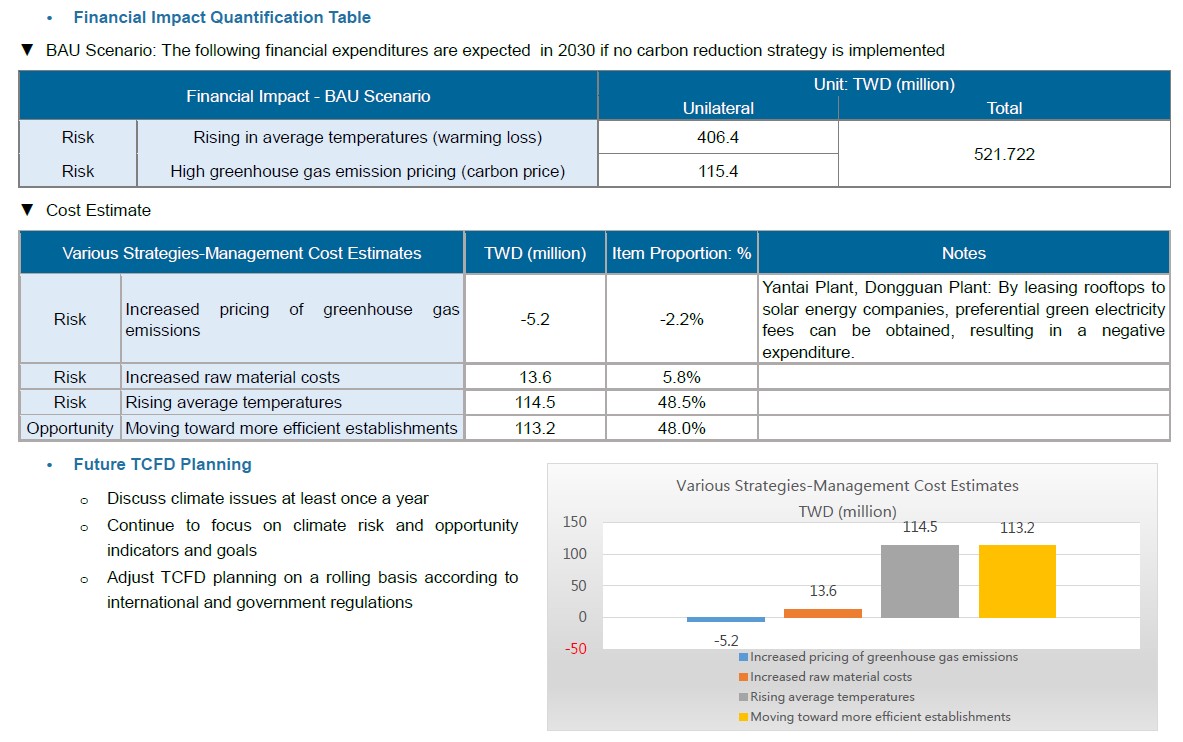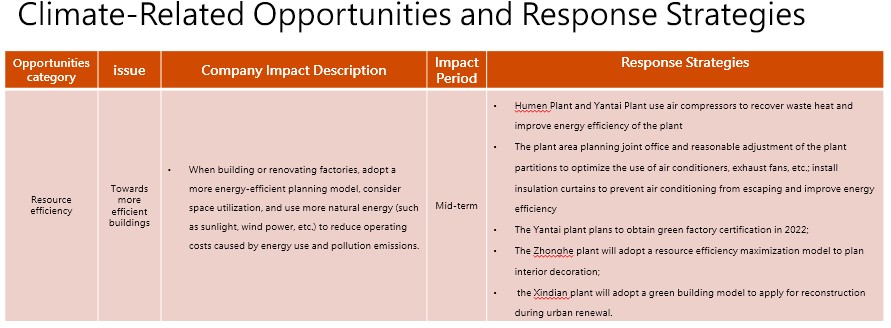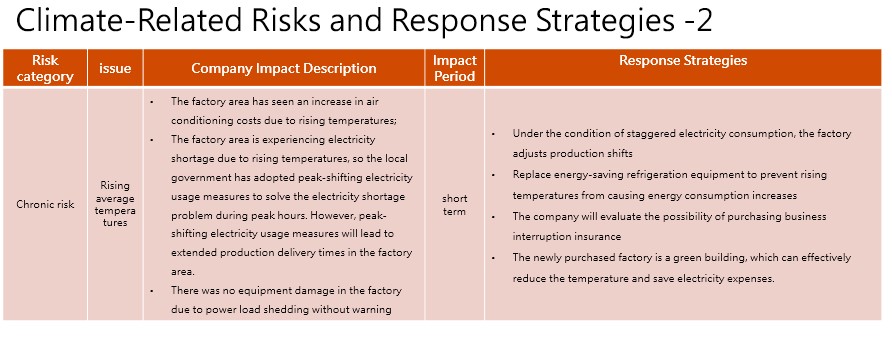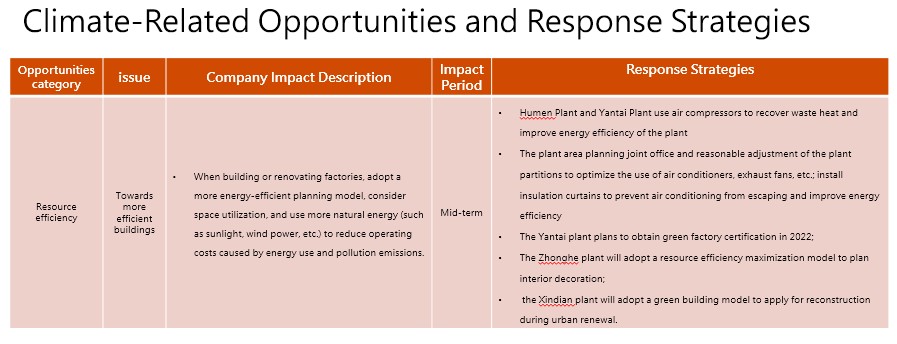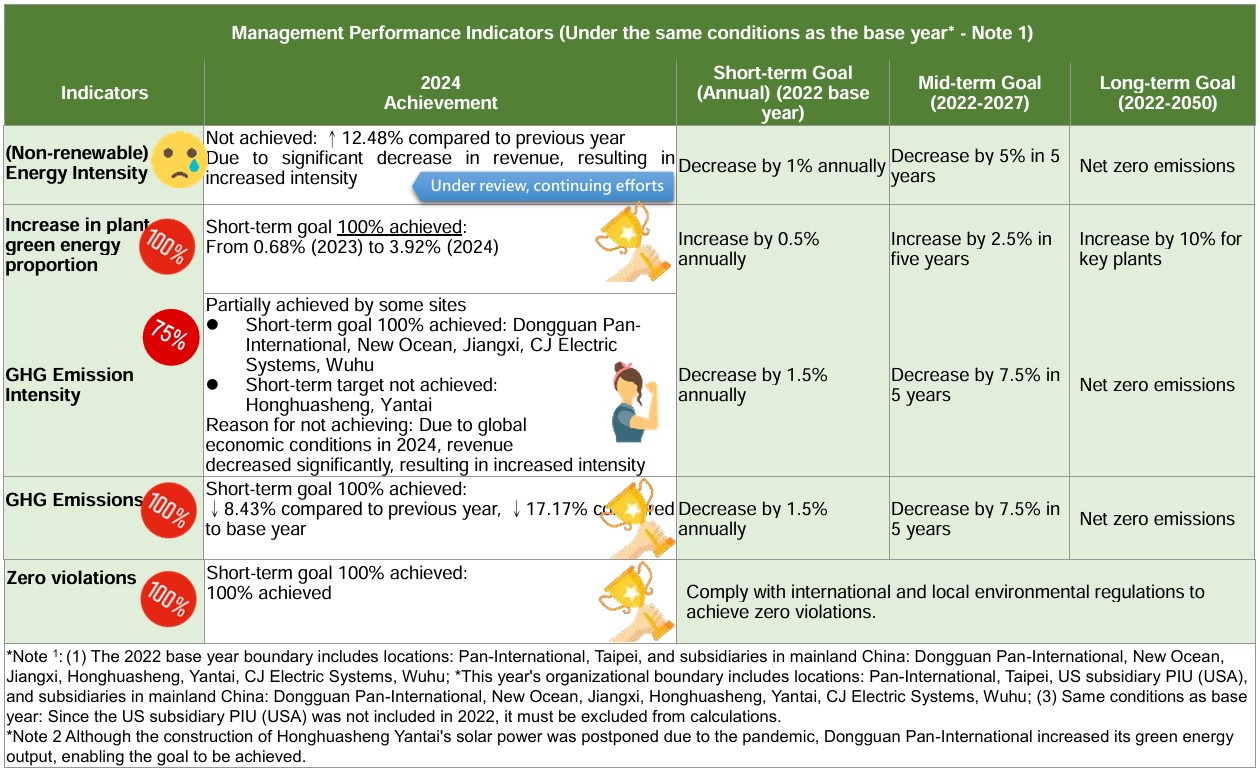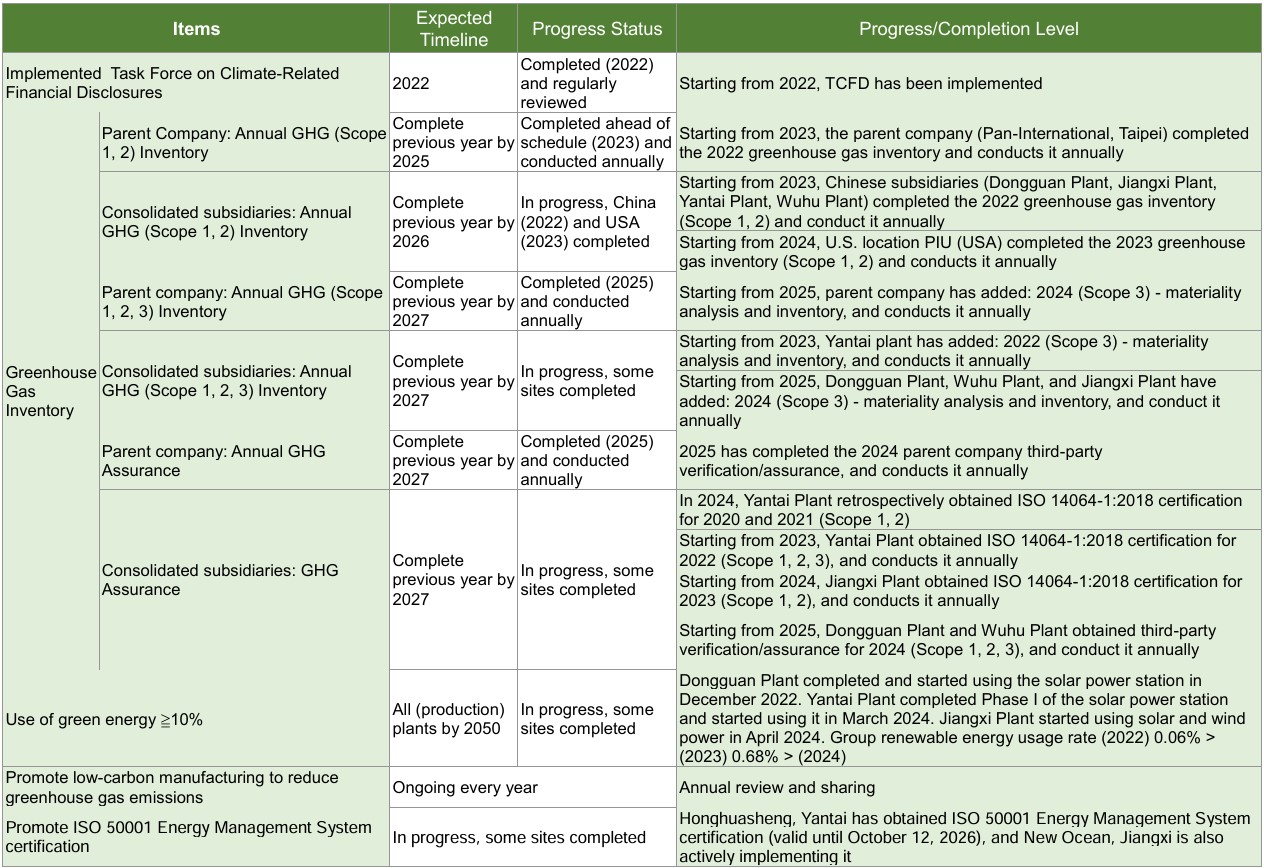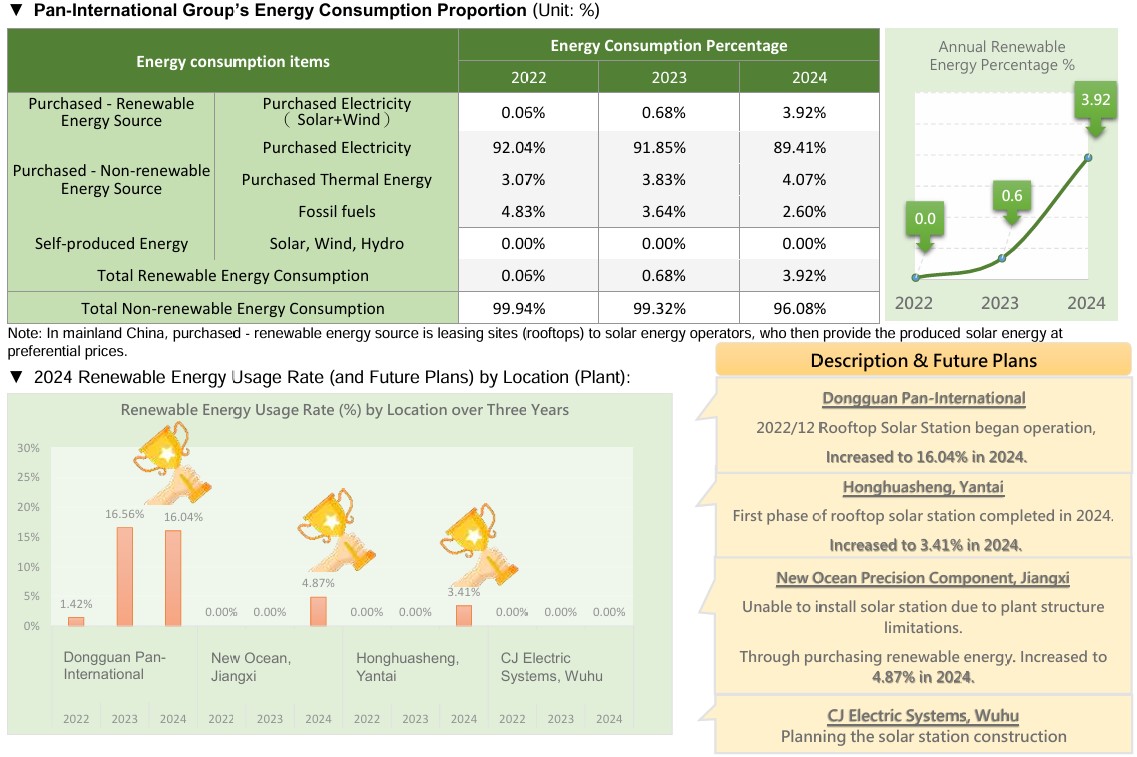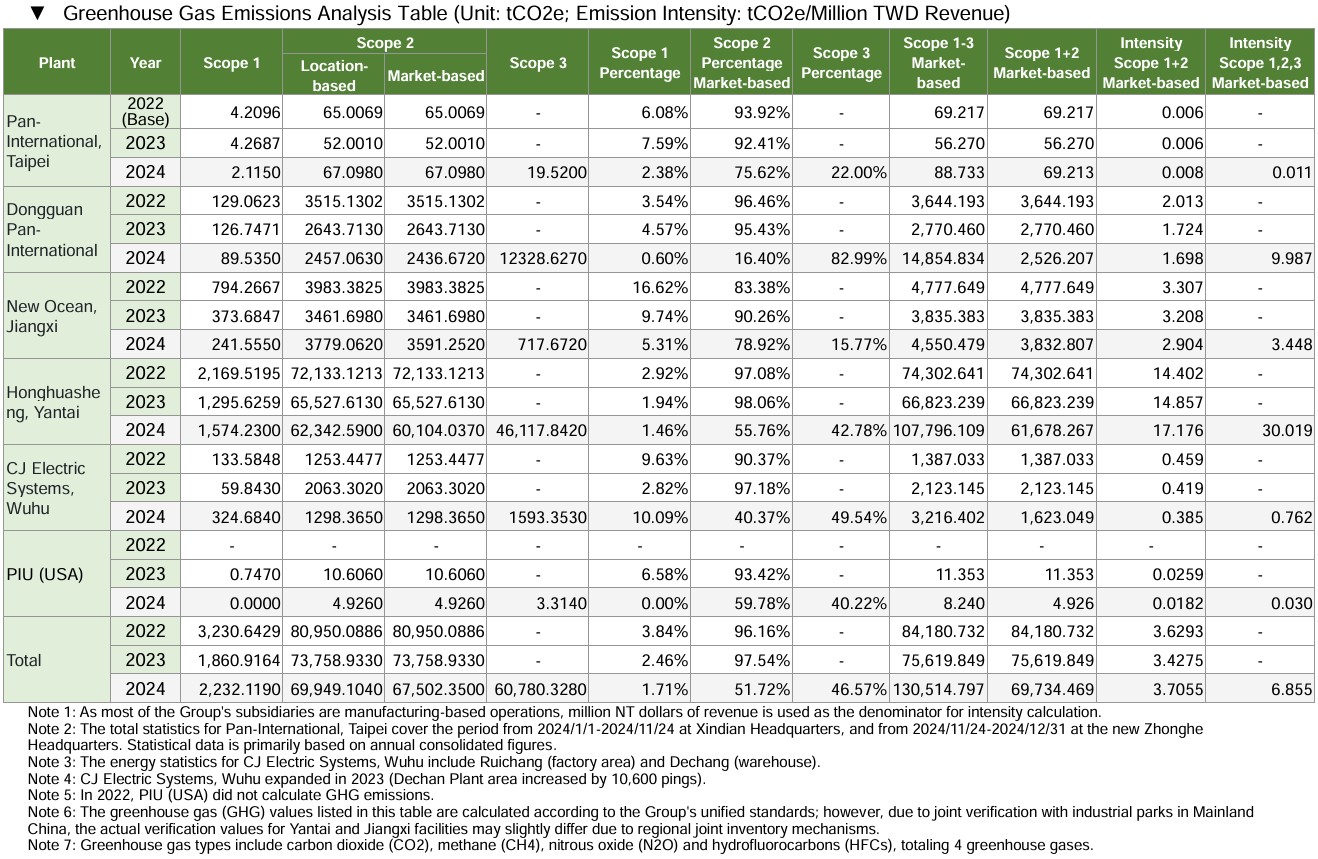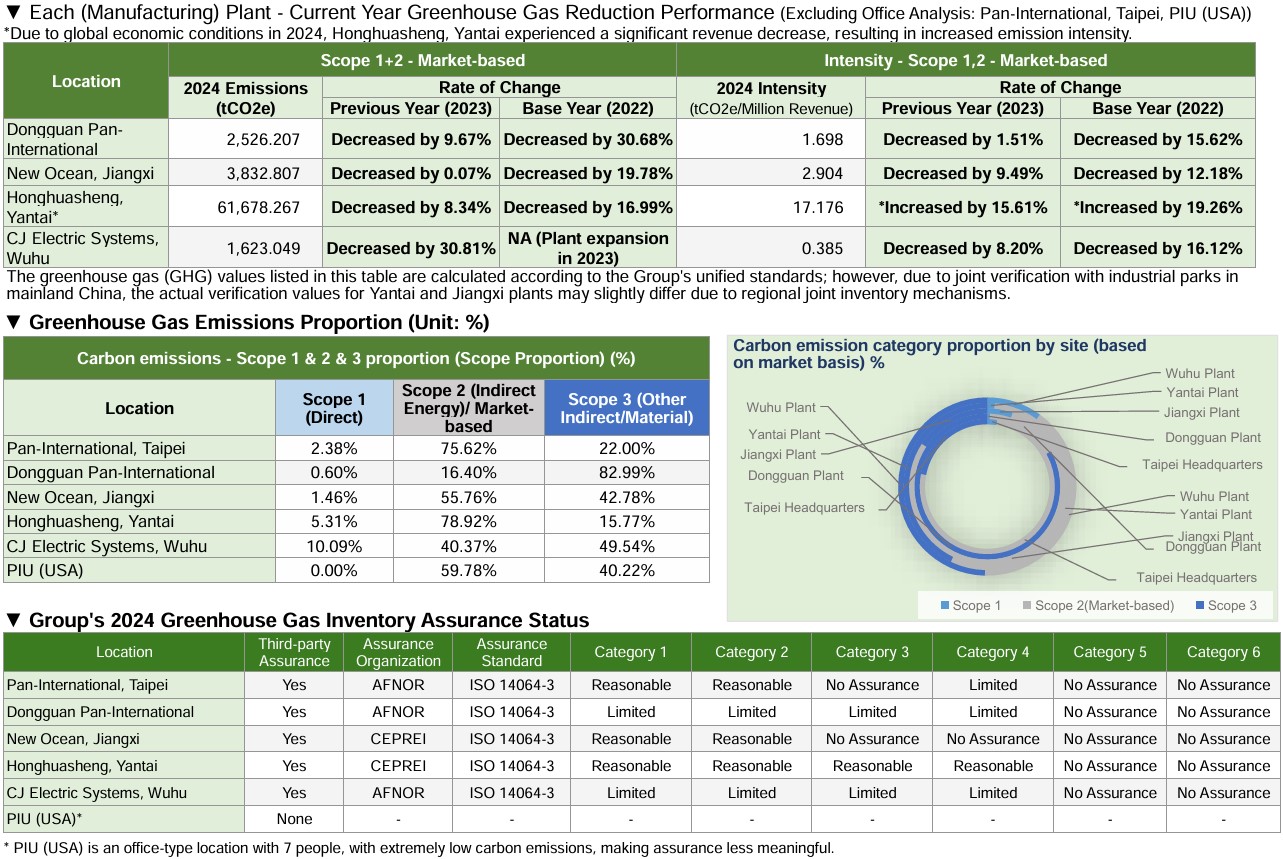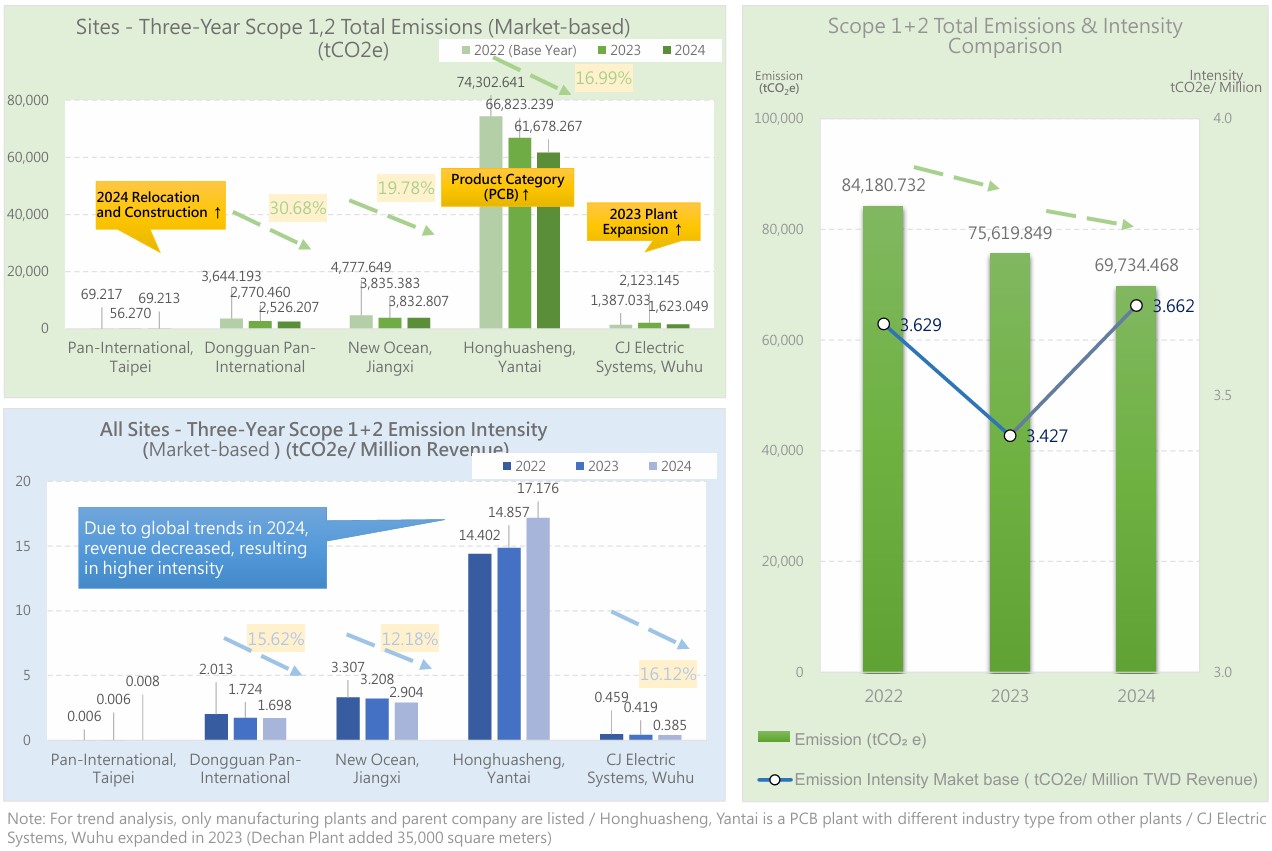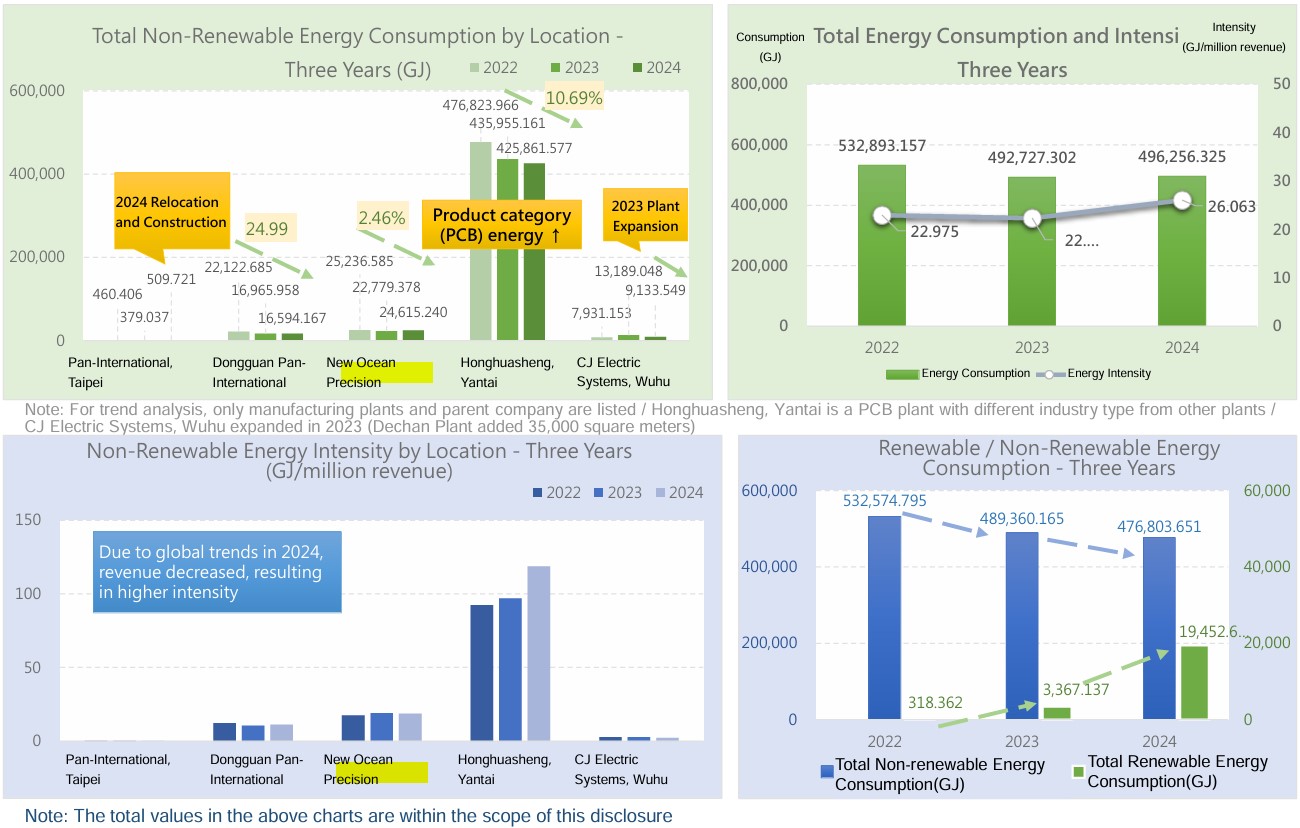Energy, Climate, Carbon Emissions Management
Impact:
*Energy
1. Energy consumption leads to rising costs, which increases operating expenses
2. Failure to fulfill corporate social responsibility
3. Deduction on company evaluation score
*Greenhouse Gas
1. The gradual increase in greenhouse gas emission pricing
2. Extreme climate events
3. Negative stakeholder feedback
4. Violation of local and international regulations
5. Damage to corporate image
Location:Pan-International, Taipei (Parent Company) / Dongguan Pan-International / New Ocean, Jiangxi / Honghuasheng, Yantai / CJ Electric Systems, Wuhu
Policies or Commitments Established or Followed:Internal Regulations & Government Regulations
Responsible Units:Sustainability Committee / Chairman / Management Committee
Management Actions:
1. Establish Sustainability Committee: Regularly discuss the implementation and planning of work related to climate change, energy issues, and greenhouse gas emission disclosure and reduction, then report the results to the Board of Directors annually/quarterly
2. Inventory and monitor greenhouse gas emissions
3. Set carbon reduction goals and regularly review and improve
Process for Monitoring the Effectiveness of Actions:
1. Sustainability Committee: For key subsidiaries (with production plants), the Group established a management organization chaired by the Chairman, who acts as the Chairperson. The Committee meets regularly (quarterly) to discuss the implementation and planning of work related to climate change, energy issues, and greenhouse gas emission disclosure and reduction, then report the results to and review with the Board of Directors annually/quarterly
2. The Board of Directors supervises
3. The Sustainability Committee formulates and establishes energy conservation and carbon reduction policies and targets, as well as coordinating and integrating related promotion strategies and plans of each subsidiary. Regular meetings are held to continuously introduce various energy-saving plans suitable for different plants, confirm and review goal achievement rates, and challenge new energy-saving milestones
Pan-International Group follows the ISO 14064-1:18 Greenhouse Gas Inventory Standard, adopting the operational control approach to define organizational boundaries. The disclosure scope for 2024 includes Category 1 Direct Emissions, Category 2 Purchased Energy, and Categories 3 to 6 (according to the disclosure requirements of the Climate Change Response Act which replaced the Greenhouse Gas Reduction and Management Act). Categories 2-6 are calculated based on significant materiality assessment results. According to the ISO 14064-1: 2018 standard, significance assessment criteria for indirect greenhouse gas emissions are established (frequency, impact level, quantification method, and risk level). After weighted scoring based on significance identification factors for each emission type, those identified as significant emission types will be prioritized for inventory and emission calculation. The significance assessment of indirect greenhouse gas emissions comes from greenhouse gases generated by each company's operational activities, but these emission sources are not owned or controlled by the respective companies. And verification is conducted by an external third party.
This year's organizational boundary includes all locations within the scope of this sustainability report: parent company, subsidiaries in mainland China, and U.S. subsidiaries. The reporting boundary includes Category 1 direct greenhouse gas emissions: stationary sources, mobile sources, fugitive sources, process sources, etc.; Category 2 purchased energy emissions: electricity and thermal energy; Category 3: upstream transportation, business travel, etc.; Category 4: product purchases, waste disposal, etc.
Within the reporting boundary, major potential greenhouse gas emission sources are identified. The types of greenhouse gases include seven gases: carbon dioxide (CO2), methane (CH4), nitrous oxide (N2O), hydrofluorocarbons (HFCs), perfluorocarbons (PFCs), sulfur hexafluoride (SF6), and nitrogen trifluoride (NF3).
Since 2022, the Group's Taipei parent company and subsidiaries in mainland China (Dongguan Pan-International, New Ocean Precision Component Jiangxi, Honghuasheng Yantai, CJ Electric Systems Wuhu) have conducted annual greenhouse gas inventories, with 2022 serving as the base year (covering Scope 1 and Scope 2). The base year for Scope 3 is set as 2024. The U.S. subsidiary PIU (USA) began conducting inventories in 2023; however, as it is an office location with fewer than 10 people and extremely low carbon emissions, it is not included in the base year calculation scope.
<< For details, please refer to: The latest version of the ESG Sustainability Report Chapter: Environmental Friendly >>
